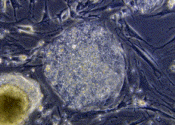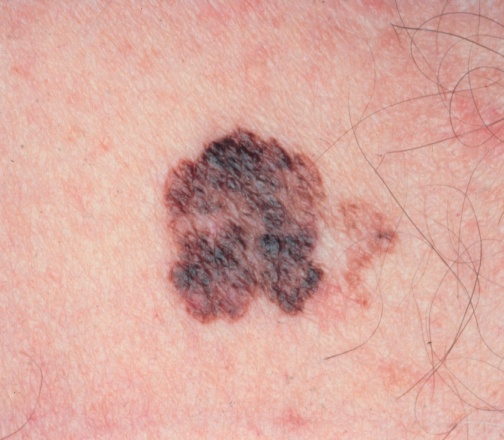2009
�����������������������������������������������������������������������������������������������������������������������������������������������������
23rd February 2009 - New research
THE DEATH RATE IN PARKINSON'S DISEASE
Movement Disorders [2009] Feb 17
[Epub ahead of print] (Diem-Zangerl A, Seppi K, Wenning GK, Trinka E, Ransmayr
G, Oberaigner W, Poewe W.)
Complete abstract
Parkinson's Disease is not a fatal illness. However, it has often been claimed
that somebody has died due to the complications of Parkinson's Disease, such as
the assertion made on the following
web site
: "Parkinson's sufferers eventually die from secondary complications such as
pneumonia, urinary tract infection, pressure sores, septicemia and stroke."
Although Parkinson's Disease reduces the ability to cope with some medical
disorders,
deaths due to some medical disorders have been associated with Parkinson's
Disease even though Parkinson's
Disease
has nothing in common with them.
 Researchers have shown that claims of death
being much more likely in Parkinson's Disease are greatly exaggerated. After 5
years of Parkinson's Disease, the death rate was actually significantly lower
than for
other people of the same age. Even after 10 years
of Parkinson's Disease, the death rate remained lower than for people without
Parkinson's Disease. Only after 15 years with Parkinson's Disease did somebody's
risk of mortality increase beyond the norm, and even then it was only slight -
1.2 times more than would be expected. After 20 to 30 years with Parkinson's
Disease, the increased likelihood of mortality was still only 1.3 times normal.
The risks were found to be even less for females.
Researchers have shown that claims of death
being much more likely in Parkinson's Disease are greatly exaggerated. After 5
years of Parkinson's Disease, the death rate was actually significantly lower
than for
other people of the same age. Even after 10 years
of Parkinson's Disease, the death rate remained lower than for people without
Parkinson's Disease. Only after 15 years with Parkinson's Disease did somebody's
risk of mortality increase beyond the norm, and even then it was only slight -
1.2 times more than would be expected. After 20 to 30 years with Parkinson's
Disease, the increased likelihood of mortality was still only 1.3 times normal.
The risks were found to be even less for females.
�
20th February 2009 - New research
STEM CELL SURGERY
FAILS TO RID PARKINSON'S DISEASE
The Open Stem Cell Journal [2009] 1 : 20-29 (M.F.L�vesque,
T.Neuman,
M.Rezak)
Complete study
Researchers have published what
is described as "a landmark peer-reviewed paper" that details "the first
successful adult neural stem cell transplantation to reverse the effects of
Parkinson�s Disease". For more
information go to the
News release. However, the study involved only one patient, and surgical
operations for Parkinson's Disease are renowned for their strong placebo effect.
That patient's symptoms appeared to reduce by around 80%. However, the patient still had to remain on Parkinson's
Disease drugs. After five years they had symptoms that were worse
than
when they started, and that were deteriorating rapidly.
 This completely
nullifies claims of the operation being "landmark" or "successful". Stem cell
operations have been carried out around the world. Yet nobody has come away from
them rid of Parkinson's Disease. This is not surprising, because the use of stem
cell surgery is based on the false assumption that there is massive cell loss in
Parkinson's Disease and that replacing lost cells is the logical means of
treating it. However, not a single study in the entire medical literature has
shown that there is massive cell loss in Parkinson's Disease.
This completely
nullifies claims of the operation being "landmark" or "successful". Stem cell
operations have been carried out around the world. Yet nobody has come away from
them rid of Parkinson's Disease. This is not surprising, because the use of stem
cell surgery is based on the false assumption that there is massive cell loss in
Parkinson's Disease and that replacing lost cells is the logical means of
treating it. However, not a single study in the entire medical literature has
shown that there is massive cell loss in Parkinson's Disease.
�
18th February 2009 - News report
MELANOMA AND THE RISK
OF PARKINSON'S DISEASE
Melanoma is a form of skin
cancer that affects the pigment producing cells in the skin. For more
information go to
Melanoma. Researchers have found that people with a family history of
melanoma were nearly twice as likely to develop Parkinson's Disease as people
with no family history of Melanoma. Previous studies have found that the reverse
is true - that people with Parkinson's Disease have a greater risk of developing
melanoma. The authors claim that "The results from this study suggest that
melanoma and Parkinson's could share common genetic
components.". For more information go to the
Complete article.
 The link between the two is a common biochemistry. L-dopa is formed in the cells
involved in Parkinson's Disease and goes on to produce dopamine : L-tyrosine >>>
L-dopa >>> dopamine. In certain skin cells, L-dopa is also formed, but instead
goes on to produce melanin, the pigment that colours skin : L-tyrosine >>>
L-dopa >>> melanin. People with Parkinson's Disease also tend not to produce
neuromelanin, a pigment that occurs in the brain, because that pigment and
dopamine are initially produced by exactly the same means. So Parkinson's
Disease does not necessarily increase the risk of Melanoma. They just have some
biochemistry in common.
The link between the two is a common biochemistry. L-dopa is formed in the cells
involved in Parkinson's Disease and goes on to produce dopamine : L-tyrosine >>>
L-dopa >>> dopamine. In certain skin cells, L-dopa is also formed, but instead
goes on to produce melanin, the pigment that colours skin : L-tyrosine >>>
L-dopa >>> melanin. People with Parkinson's Disease also tend not to produce
neuromelanin, a pigment that occurs in the brain, because that pigment and
dopamine are initially produced by exactly the same means. So Parkinson's
Disease does not necessarily increase the risk of Melanoma. They just have some
biochemistry in common.
�
16th February 2009 - News report
SUPER MICROSCOPE TO
DETECT PARKINSON'S DISEASE
Researchers from Keele
University, in England, are using a "super-microscope" to diagnose Parkinson's
Disease. They have been using a synchotron, or Diamond Light Source. The
synchotron� is a large doughnut-shaped
particle accelerator, the size of five football pitches. It fires particles at
near the speed of light, focusing them into a beam less than a single cell in diameter. It allows
researchers to observe metal ions, particularly iron levels, in individual brain cells that are affected by Parkinson's
Disease. For more information go to the
news article.
 Iron is essential
for
the formation of L-dopa. The Birkmayer studies showed that iron caused a
decrease in Parkinson's Disease in all of the more
than one hundred people they tested. However, when L-dopa is deficient, as
occurs in Parkinson's Disease, iron can sometimes accumulate in an attempt to
increase L-dopa formation. So instead of iron accumulation causing Parkinson's
Disease, Parkinson's
Disease can sometimes cause an iron accumulation. Many people with Parkinson's
Disease do not have any accumulation of iron. So the method does not appear to
have any likelihood of being as effective as existing scanning methods.
Iron is essential
for
the formation of L-dopa. The Birkmayer studies showed that iron caused a
decrease in Parkinson's Disease in all of the more
than one hundred people they tested. However, when L-dopa is deficient, as
occurs in Parkinson's Disease, iron can sometimes accumulate in an attempt to
increase L-dopa formation. So instead of iron accumulation causing Parkinson's
Disease, Parkinson's
Disease can sometimes cause an iron accumulation. Many people with Parkinson's
Disease do not have any accumulation of iron. So the method does not appear to
have any likelihood of being as effective as existing scanning methods.
�
13th February 2009 - New research
THE WORLD'S HIGHEST
PREVALENCE OF PARKINSON'S DISEASE
Neuroepidemiology [2009] 32 (4) : 263-269
(Yamawaki M, Kusumi M, Kowa H, Nakashima K.)
Complete abstract
Japan might now be the
country with the world's highest prevalence of Parkinson's Disease. The U.S.A.
was the country with the highest known prevalence rates for Parkinson's Disease. However, such
high prevalence rates were only found in Nebraska, U.S.A., where the heavy pesticide use
in what is a largely agricultural area may have increased prevalence rates
beyond the norm. Other isolated areas have very high prevalence rates, such as
in the vicinity of ferromanganese plants in Brescia, Italy, and amongst the
Parsi in Bombay, whose rituals cause them to inhale fumes of the potentially
toxic Aspand seeds.
For more information go to
Prevalence of Parkinson's Disease.
 The prevalence of
Parkinson's Disease in Japan has not previously been high. However, this study shows
that the prevalence in Japan has increased continuously up to a recent high of
192 per 100,000 people. Part of the increase would be due to the greater life
expectancy.
A second factor might actually be
the time that has elapsed since the Second World War. There was a high death
rate during the Second World War of men who would have subsequently been at the age most
likely to have Parkinson's Disease. This is probably why
Japan is the only country in the world that had far more women than men with
Parkinson's Disease. Over time this is reducing in significance because
men of the age most likely to have Parkinson's Disease are now too young to
have died during the Second World War.
The prevalence of
Parkinson's Disease in Japan has not previously been high. However, this study shows
that the prevalence in Japan has increased continuously up to a recent high of
192 per 100,000 people. Part of the increase would be due to the greater life
expectancy.
A second factor might actually be
the time that has elapsed since the Second World War. There was a high death
rate during the Second World War of men who would have subsequently been at the age most
likely to have Parkinson's Disease. This is probably why
Japan is the only country in the world that had far more women than men with
Parkinson's Disease. Over time this is reducing in significance because
men of the age most likely to have Parkinson's Disease are now too young to
have died during the Second World War.
�
10th February 2009 - New research
HAIR COLOUR AND THE
RISK OF PARKINSON'S DISEASE
Annals of Neurology [2009] 65 (1) : 76-82 (Gao X, Simon KC, Han J, Schwarzschild
MA, Ascherio A.)
Complete abstract
The risk of Parkinson's Disease has been found to
increase according to hair colour. The four
colours assessed were : black, brown, blonde and red. Over 100,000 people were
assessed according to the natural colour of their
hair when they were young adults. People with black hair were found to be least
prone to Parkinson's Disease. People with brown hair were 40% more likely to develop
Parkinson's Disease. People with blonde hair were found
to
be around
60% more likely to develop Parkinson's Disease.
 Worst
at risk were people with red hair, for whom the risk of Parkinson's Disease is nearly doubled. At first this association seems
odd because hair has nothing to do with Parkinson's Disease. However, by chance, hair
colour and Parkinson's Disease share a common biochemistry. The dopamine needed
to relieve Parkinson's Disease is initially made from L-tyrosine turning in to
L-dopa. Coincidentally, melanin, the pigment that colours hair and skin is initially made by
exactly the same means, by turning L-tyrosine in to L-dopa. However, in skin
cells, instead of L-dopa then turning in to dopamine, it turns in to
melanin, in
order to darken hair and skin.
Worst
at risk were people with red hair, for whom the risk of Parkinson's Disease is nearly doubled. At first this association seems
odd because hair has nothing to do with Parkinson's Disease. However, by chance, hair
colour and Parkinson's Disease share a common biochemistry. The dopamine needed
to relieve Parkinson's Disease is initially made from L-tyrosine turning in to
L-dopa. Coincidentally, melanin, the pigment that colours hair and skin is initially made by
exactly the same means, by turning L-tyrosine in to L-dopa. However, in skin
cells, instead of L-dopa then turning in to dopamine, it turns in to
melanin, in
order to darken hair and skin.
�
8th February 2009 - New book
ALWAYS LOOKING UP : THE
ADVENTURES OF AN INCURABLE OPTIMIST�
Michael J.Fox
 Publisher's
description : Always Looking Up is a memoir of this last decade, told through
the critical themes of Michael's life: work, politics, faith, and family. The
book is a journey of self-discovery and reinvention, and a testament to the
consolations that protect him from the ravages of Parkinson's. "The last ten
years, which is really the stuff of this book, began with such a loss: my
retirement from Spin City. I found myself struggling with a strange new dynamic:
the shifting of public and private personas. I had been Mike the actor, then
Mike the actor with PD. Now was I just Mike with PD ? Parkinson's had consumed
my career and, in a sense, had become my career. I had to build a new life when
I was already pretty happy with the old one."
Click here for more details
Publisher's
description : Always Looking Up is a memoir of this last decade, told through
the critical themes of Michael's life: work, politics, faith, and family. The
book is a journey of self-discovery and reinvention, and a testament to the
consolations that protect him from the ravages of Parkinson's. "The last ten
years, which is really the stuff of this book, began with such a loss: my
retirement from Spin City. I found myself struggling with a strange new dynamic:
the shifting of public and private personas. I had been Mike the actor, then
Mike the actor with PD. Now was I just Mike with PD ? Parkinson's had consumed
my career and, in a sense, had become my career. I had to build a new life when
I was already pretty happy with the old one."
Click here for more details
�
6th February 2009 - News release
SAFINAMIDE CLINICAL TRIAL
RESULTS
Safinamide is being developed by Merck Serono and Newron as an add-on treatment
for patients with Parkinson�s Disease. Safinamide unusually has two mechanisms
by which it has effect : as a MAO-B inhibitor, which enhances the effect of
dopamine, and by the reduction of glutamergic activity by inhibiting glutamate
release. However, individually, the two approaches are not new. In clinical
trials, Safinamide was found to significantly increase �ON� time in L-dopa
treated patients with mid to late-stage Parkinson�s disease. However, the
increase in "ON" time was only 78 minutes per day. Even those patients taking a
placebo, which basically means not taking anything at all, increased their "ON" time by 42 minutes per day. So the
actual increase using Safinamide in comparison to the
placebo effect
was minimal.
 There do not appear to have been any comparison of the side effects
caused by Safinamide. Also, no consideration
was given to the long term after effects that drugs of this kind would
inevitably cause. For the full details go to the
Press release.
Merck Serono claims that �These results represent a
further step toward our goal to provide patients and doctors with urgently
needed new treatment possibilities.� Based on the evidence, their estimations
concerning the significance of the clinical trial results are unjustified.
There do not appear to have been any comparison of the side effects
caused by Safinamide. Also, no consideration
was given to the long term after effects that drugs of this kind would
inevitably cause. For the full details go to the
Press release.
Merck Serono claims that �These results represent a
further step toward our goal to provide patients and doctors with urgently
needed new treatment possibilities.� Based on the evidence, their estimations
concerning the significance of the clinical trial results are unjustified.
�
5th February 2009 - New research
THE LACK OF PARKINSON'S DISEASE
IN THE VERY OLD
Neurology [2009] 72 (5) :
432-438 (Driver JA, Logroscino G, Gaziano JM, Kurth T.)
Complete abstract
The
symptoms of
Parkinson's Disease can occur
at any age - from babies with Infantile Parkinsonism to teenagers with Juvenile
Parkinsonism. There are many people in their 20's, 30's and 40's with
Parkinson's Disease. However, the most common age at which
Parkinson's Disease is diagnosed is in the late 50's.
 Researchers have found
that the incidence
of Parkinson's Disease (the rate at which it began) increased sharply at 60
years old. The likelihood of developing Parkinson's Disease
continued to increase until it reached a peak at 85-89 years old. Contrary to
what is widely assumed, the likelihood of developing Parkinson's Disease starts
to decline at 90 years of age, and reduces even further after that.
In a previous study it was found
that amongst the very oldest of people (those between 110 and 119 years old)
Parkinson's Disease is virtually unknown. These studies contradict the view of
Parkinson's Disease being due to inevitable decline with age. If cell damage and
gradual deterioration with age were the primary cause of Parkinson's Disease, 10
years olds wouldn't get it and 110 year olds would.� Yet the opposite can
occur.
Researchers have found
that the incidence
of Parkinson's Disease (the rate at which it began) increased sharply at 60
years old. The likelihood of developing Parkinson's Disease
continued to increase until it reached a peak at 85-89 years old. Contrary to
what is widely assumed, the likelihood of developing Parkinson's Disease starts
to decline at 90 years of age, and reduces even further after that.
In a previous study it was found
that amongst the very oldest of people (those between 110 and 119 years old)
Parkinson's Disease is virtually unknown. These studies contradict the view of
Parkinson's Disease being due to inevitable decline with age. If cell damage and
gradual deterioration with age were the primary cause of Parkinson's Disease, 10
years olds wouldn't get it and 110 year olds would.� Yet the opposite can
occur.
�
��
.gif)
.gif)
 Researchers have shown that claims of death
being much more likely in Parkinson's Disease are greatly exaggerated. After 5
years of Parkinson's Disease, the death rate was actually significantly lower
than for
other people of the same age. Even after 10 years
of Parkinson's Disease, the death rate remained lower than for people without
Parkinson's Disease. Only after 15 years with Parkinson's Disease did somebody's
risk of mortality increase beyond the norm, and even then it was only slight -
1.2 times more than would be expected. After 20 to 30 years with Parkinson's
Disease, the increased likelihood of mortality was still only 1.3 times normal.
The risks were found to be even less for females.
Researchers have shown that claims of death
being much more likely in Parkinson's Disease are greatly exaggerated. After 5
years of Parkinson's Disease, the death rate was actually significantly lower
than for
other people of the same age. Even after 10 years
of Parkinson's Disease, the death rate remained lower than for people without
Parkinson's Disease. Only after 15 years with Parkinson's Disease did somebody's
risk of mortality increase beyond the norm, and even then it was only slight -
1.2 times more than would be expected. After 20 to 30 years with Parkinson's
Disease, the increased likelihood of mortality was still only 1.3 times normal.
The risks were found to be even less for females. This completely
nullifies claims of the operation being "landmark" or "successful". Stem cell
operations have been carried out around the world. Yet nobody has come away from
them rid of Parkinson's Disease. This is not surprising, because the use of stem
cell surgery is based on the false assumption that there is massive cell loss in
Parkinson's Disease and that replacing lost cells is the logical means of
treating it. However, not a single study in the entire medical literature has
shown that there is massive cell loss in Parkinson's Disease.
This completely
nullifies claims of the operation being "landmark" or "successful". Stem cell
operations have been carried out around the world. Yet nobody has come away from
them rid of Parkinson's Disease. This is not surprising, because the use of stem
cell surgery is based on the false assumption that there is massive cell loss in
Parkinson's Disease and that replacing lost cells is the logical means of
treating it. However, not a single study in the entire medical literature has
shown that there is massive cell loss in Parkinson's Disease.  The link between the two is a common biochemistry. L-dopa is formed in the cells
involved in Parkinson's Disease and goes on to produce dopamine : L-tyrosine >>>
L-dopa >>> dopamine. In certain skin cells, L-dopa is also formed, but instead
goes on to produce melanin, the pigment that colours skin : L-tyrosine >>>
L-dopa >>> melanin. People with Parkinson's Disease also tend not to produce
neuromelanin, a pigment that occurs in the brain, because that pigment and
dopamine are initially produced by exactly the same means. So Parkinson's
Disease does not necessarily increase the risk of Melanoma. They just have some
biochemistry in common.
The link between the two is a common biochemistry. L-dopa is formed in the cells
involved in Parkinson's Disease and goes on to produce dopamine : L-tyrosine >>>
L-dopa >>> dopamine. In certain skin cells, L-dopa is also formed, but instead
goes on to produce melanin, the pigment that colours skin : L-tyrosine >>>
L-dopa >>> melanin. People with Parkinson's Disease also tend not to produce
neuromelanin, a pigment that occurs in the brain, because that pigment and
dopamine are initially produced by exactly the same means. So Parkinson's
Disease does not necessarily increase the risk of Melanoma. They just have some
biochemistry in common.
 Iron is essential
for
the formation of L-dopa. The Birkmayer studies showed that iron caused a
decrease in Parkinson's Disease in all of the more
than one hundred people they tested. However, when L-dopa is deficient, as
occurs in Parkinson's Disease, iron can sometimes accumulate in an attempt to
increase L-dopa formation. So instead of iron accumulation causing Parkinson's
Disease, Parkinson's
Disease can sometimes cause an iron accumulation. Many people with Parkinson's
Disease do not have any accumulation of iron. So the method does not appear to
have any likelihood of being as effective as existing scanning methods.
Iron is essential
for
the formation of L-dopa. The Birkmayer studies showed that iron caused a
decrease in Parkinson's Disease in all of the more
than one hundred people they tested. However, when L-dopa is deficient, as
occurs in Parkinson's Disease, iron can sometimes accumulate in an attempt to
increase L-dopa formation. So instead of iron accumulation causing Parkinson's
Disease, Parkinson's
Disease can sometimes cause an iron accumulation. Many people with Parkinson's
Disease do not have any accumulation of iron. So the method does not appear to
have any likelihood of being as effective as existing scanning methods. The prevalence of
Parkinson's Disease in Japan has not previously been high. However, this study shows
that the prevalence in Japan has increased continuously up to a recent high of
192 per 100,000 people. Part of the increase would be due to the greater life
expectancy.
A second factor might actually be
the time that has elapsed since the Second World War. There was a high death
rate during the Second World War of men who would have subsequently been at the age most
likely to have Parkinson's Disease. This is probably why
Japan is the only country in the world that had far more women than men with
Parkinson's Disease. Over time this is reducing in significance because
men of the age most likely to have Parkinson's Disease are now too young to
have died during the Second World War.
The prevalence of
Parkinson's Disease in Japan has not previously been high. However, this study shows
that the prevalence in Japan has increased continuously up to a recent high of
192 per 100,000 people. Part of the increase would be due to the greater life
expectancy.
A second factor might actually be
the time that has elapsed since the Second World War. There was a high death
rate during the Second World War of men who would have subsequently been at the age most
likely to have Parkinson's Disease. This is probably why
Japan is the only country in the world that had far more women than men with
Parkinson's Disease. Over time this is reducing in significance because
men of the age most likely to have Parkinson's Disease are now too young to
have died during the Second World War.
 Worst
at risk were people with red hair, for whom the risk of Parkinson's Disease is nearly doubled. At first this association seems
odd because hair has nothing to do with Parkinson's Disease. However, by chance, hair
colour and Parkinson's Disease share a common biochemistry. The dopamine needed
to relieve Parkinson's Disease is initially made from L-tyrosine turning in to
L-dopa. Coincidentally, melanin, the pigment that colours hair and skin is initially made by
exactly the same means, by turning L-tyrosine in to L-dopa. However, in skin
cells, instead of L-dopa then turning in to dopamine, it turns in to
Worst
at risk were people with red hair, for whom the risk of Parkinson's Disease is nearly doubled. At first this association seems
odd because hair has nothing to do with Parkinson's Disease. However, by chance, hair
colour and Parkinson's Disease share a common biochemistry. The dopamine needed
to relieve Parkinson's Disease is initially made from L-tyrosine turning in to
L-dopa. Coincidentally, melanin, the pigment that colours hair and skin is initially made by
exactly the same means, by turning L-tyrosine in to L-dopa. However, in skin
cells, instead of L-dopa then turning in to dopamine, it turns in to
 Publisher's
description : Always Looking Up is a memoir of this last decade, told through
the critical themes of Michael's life: work, politics, faith, and family. The
book is a journey of self-discovery and reinvention, and a testament to the
consolations that protect him from the ravages of Parkinson's. "The last ten
years, which is really the stuff of this book, began with such a loss: my
retirement from Spin City. I found myself struggling with a strange new dynamic:
the shifting of public and private personas. I had been Mike the actor, then
Mike the actor with PD. Now was I just Mike with PD ? Parkinson's had consumed
my career and, in a sense, had become my career. I had to build a new life when
I was already pretty happy with the old one."
Publisher's
description : Always Looking Up is a memoir of this last decade, told through
the critical themes of Michael's life: work, politics, faith, and family. The
book is a journey of self-discovery and reinvention, and a testament to the
consolations that protect him from the ravages of Parkinson's. "The last ten
years, which is really the stuff of this book, began with such a loss: my
retirement from Spin City. I found myself struggling with a strange new dynamic:
the shifting of public and private personas. I had been Mike the actor, then
Mike the actor with PD. Now was I just Mike with PD ? Parkinson's had consumed
my career and, in a sense, had become my career. I had to build a new life when
I was already pretty happy with the old one."
 There do not appear to have been any comparison of the side effects
caused by Safinamide. Also, no consideration
was given to the long term after effects that drugs of this kind would
inevitably cause. For the full details go to the
There do not appear to have been any comparison of the side effects
caused by Safinamide. Also, no consideration
was given to the long term after effects that drugs of this kind would
inevitably cause. For the full details go to the
 Researchers have found
that the incidence
of Parkinson's Disease (the rate at which it began) increased sharply at 60
years old. The likelihood of developing Parkinson's Disease
continued to increase until it reached a peak at 85-89 years old. Contrary to
what is widely assumed, the likelihood of developing Parkinson's Disease starts
to decline at 90 years of age, and reduces even further after that.
Researchers have found
that the incidence
of Parkinson's Disease (the rate at which it began) increased sharply at 60
years old. The likelihood of developing Parkinson's Disease
continued to increase until it reached a peak at 85-89 years old. Contrary to
what is widely assumed, the likelihood of developing Parkinson's Disease starts
to decline at 90 years of age, and reduces even further after that.